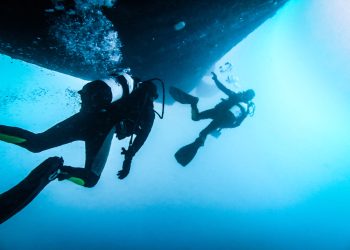The stability of a vessel is of paramount concern
 The stability of a vessel is of paramount concern in regard to the safety of the vessel. The earliest regulatory recognition of this can be traced to before Samuel Plimsoll in the 1860’s. Times have moved on and stability regulations have come on a long way but the concern remains high.
The stability of a vessel is of paramount concern in regard to the safety of the vessel. The earliest regulatory recognition of this can be traced to before Samuel Plimsoll in the 1860’s. Times have moved on and stability regulations have come on a long way but the concern remains high.
Only as recent as last year 44 seafarers lost their lives in three separate incidents where vessels carrying ore cargoes capsized and sank. In each case the vessels had loaded ore cargoes which were declared as Group “C”
“Group C consists of cargoes which are neither liable to Liquefy (Group A) nor posses chemical hazards (Group B).” IMSBC Code, 1.7.14.
It is widely accepted that the cause of each accident was that the cargoes had in fact liquefied and caused a loss of stability resulting in total loss. Quite clearly these cargoes were Group A cargoes.
“Group A consists of cargoes which may liquefy if shipped at a moisture content in excess of their transportable moisture limit.” IMSBC code, 1.7.12
In order that ALL parties can make the correct decisions in regard to how best to handle, load and ship these cargoes it is imperative that correct, accurate and relevant information is supplied by the shipper. If information is not forthcoming or there is doubt as to the validity of the information supplied the Master and/or vessel owner should voice concerns and request further testing.
It must be remembered that the requirement to supply the vessel with accurate information is a requirement of the IMSBC Code and therefore a requirement of SOLAS.
A common mis-declaration practice is to use cargo trade names rather than the Bulk Cargo Shipping Name (BCSN). This practice only confuses the matter and hampers safety efforts. The proper Bulk Cargo Shipping Name should always be used when issuing information to the vessel.
Another common practice is to supply details of the Transportable Moisture Limit (TML) and the moisture content, (MC) (which maybe below the TML) but then to describe the cargo as Group C. Suspicion should be raised here as a cargo with a TML and a MC is clearly able to liquefy (if the moisture content were to be raised) and therefore qualifies as a Group A cargo.
When faced with loading a cargo which is not explicitly named in Appendix 1 of the code the provisions of Section 1.3 should be adhered to. The competent authority of the port of loading is required to provide the Master with a certificate stating the characteristics of the cargo and the required conditions for carriage.
A list of competent authorities is found in the supplement section found at the back of the code.
It is hoped that through a better understanding of the code, its provisions and by establishing a safety culture by all parties the unfortunate and fatal losses of 2010 can be avoided.
Source: UK P&I Club
































































